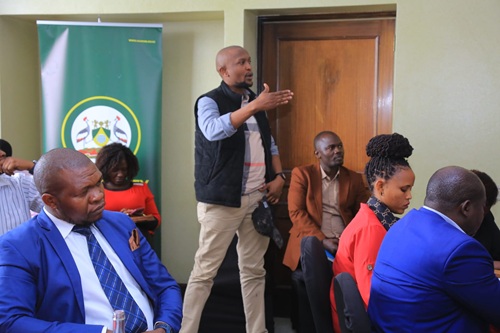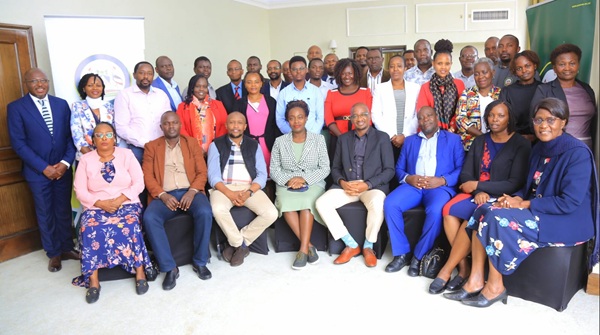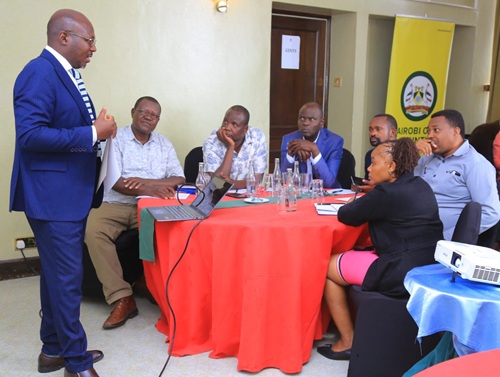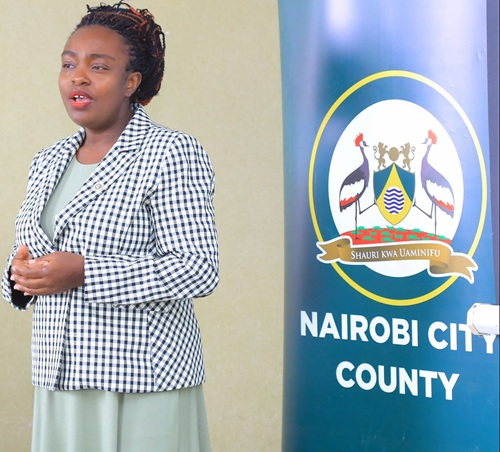The Future for the Nairobi we want
From nairobi.go.ke
County Chief Officer for Housing and Urban Renewal, Ms. Lydia Mathia, yesterday led a team of stakeholders for a one-day workshop to discuss and validate the Nairobi City County Slum Upgrading and Prevention Strategy in Nairobi.
The strategy speaks to the core factors that cause proliferation of slums as well as approaches that can be pursued to prevent further increase in slums in Nairobi City County. It however moves further to adopt and make actionable commitments and obligations for the County, by outlining mechanisms for implementing sustainable urbanization patterns; including an adequate standard of living for the current and future urban’s less privileged demography in Nairobi; economic growth and environmental protection.
Urbanization in Kenya continues to face significant challenges in leaps and bounds. From increased demand for economic opportunities, demand for adequate and affordable housing to basic infrastructure and services in urban areas. Inadequate response to urbanization has in turn led to growth of slums and informal settlements at alarming rates.
This raises the need to develop effective strategies to respond to the evolving challenges and more so prevent proliferation of slums while providing opportunities for improvement of the well-being of all residents.
Concerns from both the National and County Governments, led the National government to formulating a National Slum Upgrading and Prevention Policy (NSUPP) 2016 to guide development of strategies in the Counties so as to improve the informal settlements and prevent growth of more slums.
The second Kenya informal settlements improvement project (KISIP2) under the Ministry of Lands, Public Works, Housing and Urban Development- State Department for Housing and Urban Development brought on board a consultant, South Consulting Africa Ltd to develop a strategy fit for every County and in line with the National Slum Upgrading and Prevention Policy (NSUPP) 2016.
The Nairobi Slums Upgrading and Prevention strategy was developed through a participatory process that attempted to balance the competing claims of key interest groups and build and maintain a sufficient consensus between technical options and felt needs of the slum dwellers and those vulnerable to moving to the slums.
In its design and proposed strategies, it calls for a balanced system of the City of Nairobi and other human settlements in the metropolis and clear land rights and obligations for all citizens, including land tenure security for the poor, as a basis for advancing the place of Nairobi as a modern and competitive hub.
In her remarks, the County Chief Officer for Housing and Urban Renewal- Ms. Lydia Mathia, commended the efforts by the consultant that led to the birth of a people centered localized strategy that provides a more contextualized interpretation of urban dynamics. She also called upon the team of experts to speed up the process of finalizing the strategy, owing to the constrained timelines for execution.
Said Mathia “With bated breath, we look forward to the day we set the ball rolling for implementation. Leading from the front, we are confident that it will be easy and effortless having embodied the spirit of community engagement, multi-stakeholder approaches, and good governance from the onset.”
Additionally, Ms. Mathia acknowledged the presence of Members of Nairobi County Assembly -Planning committee who came in their numbers and for their input and contribution towards the Slum Upgrading and Prevention Strategy document.
The lead technical person from South Consulting Africa Limited Mr. Musyimi Mbathi gave the genesis of the strategy document from inception to date.
He highlighted that it began with the historical problem of discriminatory functional planning who’s operational had shifted over time from race to class-based cleavages, with consequences been an unequal city and where a majority find themselves in choice less, insecure land tenure and indignity situation, followed by incomplete planning which required new protocols.
Inept development control measures and procedures whose consequences was random development of infrastructure and buildings followed, and finally was the problem of an entrenched web of land speculators and structure owners in slums and informal settlement who have developed ‘entrepreneurial slums’.
The elaborate consultations and technical input birthed five transformative outcomes which were prioritized by stakeholders namely:- (a) providing ‘at risk individuals’ with access to social and economic rights; (b) establishment and promotion of inclusive County and National infrastructure and economies; (c) provision of and monitoring of land Tenure Security for ‘at risk individuals’; (d)establish County Slums Prevention and upgrading forum to enhance collaboration between key state and non-state actors; and (e) develop and implement framework for integrating environmentally sustainable and resilient urban development.
Identifying linkages and synergies in Nairobi County Government’s priorities between the Slums Upgrading and Prevention strategy and existing commitments and obligations, will facilitate the implementation, monitoring and reporting of the Slums Upgrading and Prevention strategy.
It is this approach that will inform the implementation structures, which shall be Nairobi City County Government led, but people centered.







